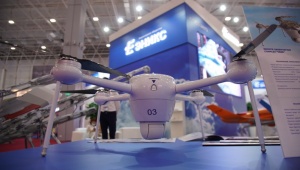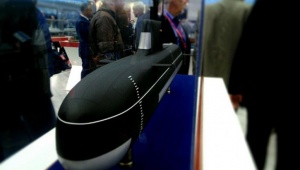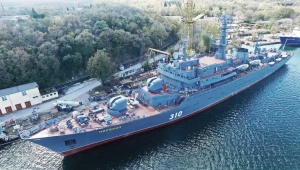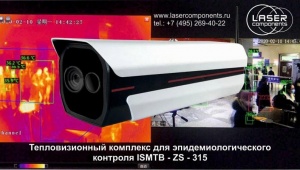As a part of the import substitution program, since 2014 NPO Saturn has been conducting three design projects for engines M90FR, Agregat-DKVP and M70FRU-R, said an official of the United Engine Corporation (UEC). The new Russian propulsion plants will be mounted on the project 22350 and project 11356 frigates, small-size air cushion landing ship Zubr, and other Russian Navy’s ships.
On April 25 in Rybinsk, the company demonstrated two marine gas-turbine engines, M70FRU and M70FRU-2. In the table below, Mil.Today compared parameters of these gas-turbine engines with Ukrainian analogs and the M90FR.
| Manufacturer | Zorya-Mashproekt | NPO Saturn | Zorya-Mashproekt | NPO Saturn | NPO Saturn |
|---|---|---|---|---|---|
| Powerplant | М35 | М27 | М27/М7N1 | М55R | |
| Engine | DP71/DM71 (UGT6000) |
M70FRU-2 | D090 (UGT15000R) |
M70FRU | M90FR |
| Efficiency, % | 32 | 32,4 | 32 | 36 | ~36 |
| Power, MW | 7,35 | 7,35 | 14,7 | 14 | 20,2 |
| Power turbine rotation rate, rpm |
7000 |
7200 |
4400 | 6500 | 3450 |
| Power turbine output temperature, °C |
440 |
506 |
430 | 523 | - |
Efficiency of the Russian gas-turbine engine for Zubr air cushion landing ship is better than the Ukrainian one only by 0.4%
Engine M70FRU-2 produced by NPO Saturn will be a basis for powerplant of the Project 12322 Zubr small-size air cushion landing ship. Initially, M35-2-type gas turbine was a powerplant of the Zubr-class ships. It consists of three propulsion gas-turbine units (GTU) M35-1 and two supercharging GTUs M35-2. Each unit includes Soviet-designed gas-turbine engines DP71 (by Ukrainian classification – UGT6000) developed and produced by Zorya-Mashproekt. Engines DP71 are made in Nikolayev since 1978.
To replace Ukrainian gas-turbine engines, in 2014 Saturn launched the RD project codenamed Agregat DKVP. The project’s objective is creation of the M70FRU-2 gas-turbine engine and marine GTUs M35R-1, M35R-2 and M70R with the power of 10,000 hp. In characteristics of M70FRU-2 engine presented on April 25 by NPO Saturn, the efficiency is stated as 32.4%. This is only 0.4% better than the Ukrainian analog.
Perhaps, parameters of the Saturn-made engines (especially M70FRU-2) would be improved in the future, because all three projects are to be finished in December 2017 and trials are not completed yet. UEC officials said on April 25 that "further development of marine gas-turbine engines may be oriented at power growth and efficiency improvement". Besides, Saturn is mastering cobalt alloys.
According to the source of Mil.Today at Zorya-Mashproekt, the use of new cobalt alloys with additive technology may "in some way improve features of a gas-turbine engine, including increasing of its efficiency". The Ukrainian company called cobalt alloys and additive technology their own know-how being worked on for several years.
Russian gas-turbine engines for Project 11356 frigates and Project 11540 corvettes outran Ukrainian counterparts in efficiency
Saturn-made engines M70FRU and M90FR were made to substitute Ukrainian analogs DS71 and D090, respectively, a well-aware insider told Mil.Today. In the main propulsion plant M27 mounted in the Project 11540 (Yastreb-class) corvette Yaroslav Mudryi, D090 engines are boosters while DS71 are cruising ones. At that, the Russian engines have efficiency of 36%, compared to 32% of Ukrainian powerplants.
Main propulsion plant of Project 11356 frigates is M7N1, using DS71 (known in Ukraine as UGT6000) as cruising engines, and boosters are DT59 (UGT16000). Efficiency of the latter one is only 30%.
Efficiency of gas-turbine engines is limited to 38-40%, say manufacturers and designers
According to Valery Ryzhov, head designer at the Kolomensky Zavod said in the interview to Mil.Today in 2015, efficiency of any gas-turbine engine "is under the limit of 36%, not more. To improve this parameter, operating temperature in the combustion chamber must be increased. In turn, that will affect the limit of strength rupture of moving blades. In diesel engine, maximum combustion temperature is up to 1,700 degrees, but it’s impossible to have such temperature in gas-turbine engine because the blades will burn".
The UEC officials say efficiency of most of their new engines amounts to 36%. Our insider at Zorya-Mashproekt admitted that efficiency of gas-turbine engines could not exceed 38-40%.The latest Ukrainian engines, for instance, UGT 25000, have efficiency of 36-37% (in various versions). By the way, Rolls-Royce declared in 2016 that the efficiency of its MT-30 was over 40%.
Efficiency of gas-turbine engines depends on quality of materials and components
Experts of DieselZipService Group specializing in engine repairs told Mil.Today, the turbine efficiency stated by Rolls-Royce caused doubts and rather looked like a sales pitch. The expert added that the efficiency of gas-turbine plants depended heavily upon the engine operational conditions as well as quality of materials and components. "Example, after modernization of the fuel supply system at the DZh59 and installation of new blades made of the high-tech alloys, the engine efficiency was increased and fuel consumption was reduced", said the company representative.
He added that the innovations like cobalt alloys and additive technologies might improve this parameter even more. "For instance, the DV71L (UGT6000+) engine before capital overhaul was "tired" and its efficiency reduced by a half from 30%. The repair at the Kingisepp Engineering Plant with the use of new materials resulted in improvement of that parameter almost to the level of a new engine. However, the manufacturer’s quality of gas-turbine engine production is critical", summarized the DieselZipService expert.























